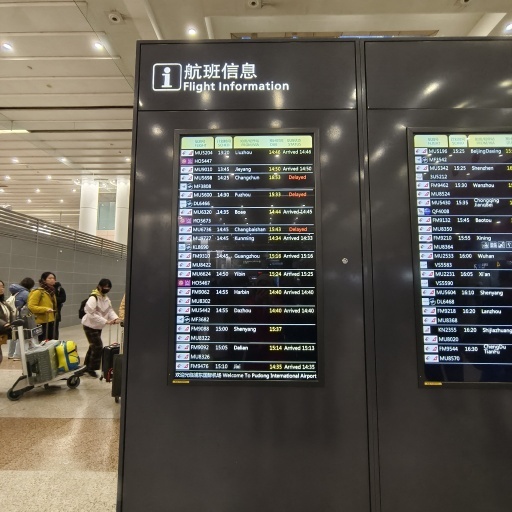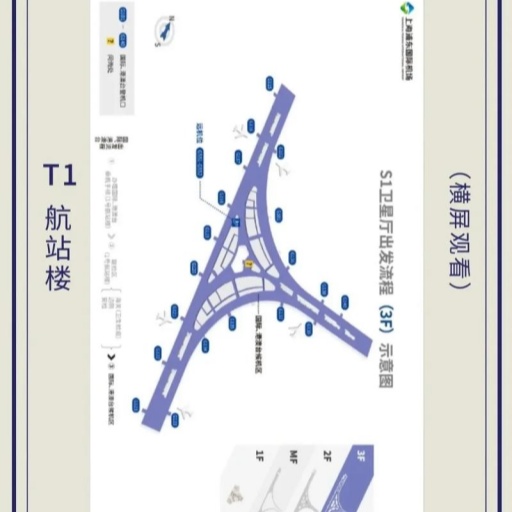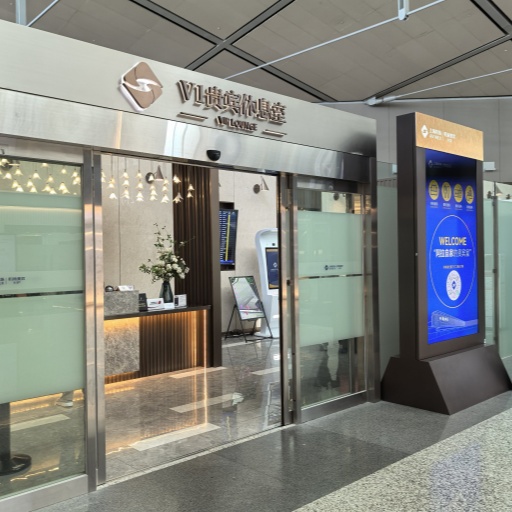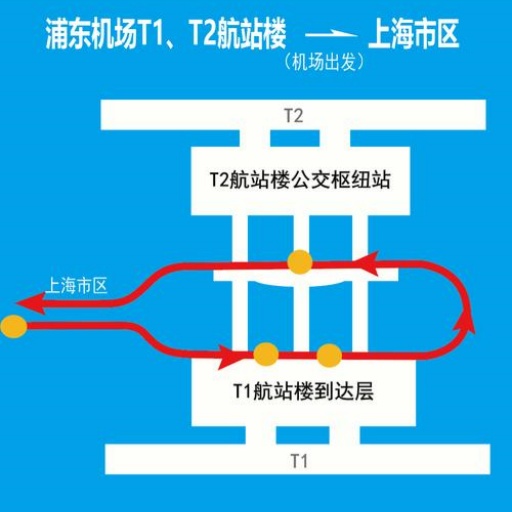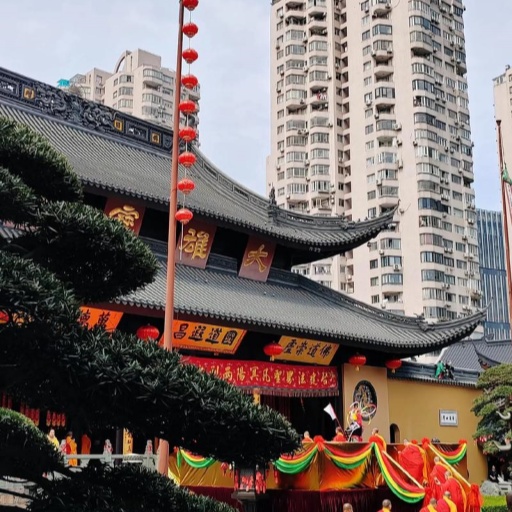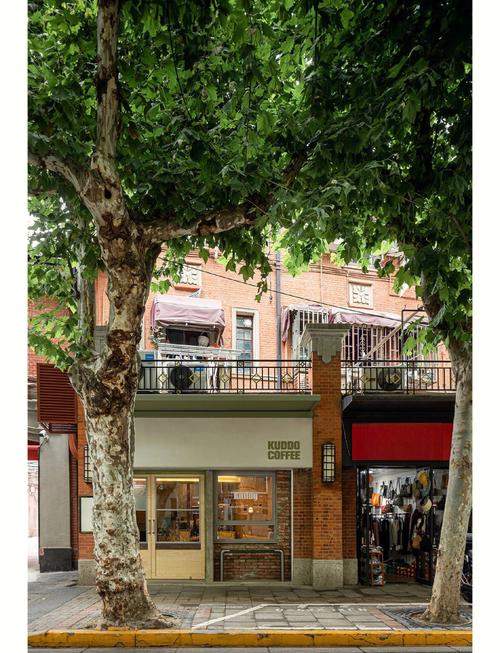Shanghai Pudong International Airport might feel huge, but don’t stress—this guide breaks it down. Whether you're catching a flight, transiting for a few hours, or just hunting for a decent bite or shower, PVG has more going on than most cities. From flight tips and visa rules to transport, duty-free deals, and foreigner-friendly hotels, here’s everything you wish you knew before landing. We skipped the fluff and got straight to the good stuff—how to move smart, eat well, and save time at Shanghai Pudong International Airport. Fly in like a rookie, leave like a pro.
What Should You Know About Shanghai Pudong International Airport Before You Fly?
- Shanghai Pudong International Airport (PVG)
- Shanghai Hongqiao Airport (SHA)
Is Pudong the Only Airport in Shanghai?
Shanghai has two major airports, and knowing the difference matters. Shanghai Pudong International Airport (PVG) handles most international flights. Shanghai Hongqiao Airport (SHA) focuses more on domestic travel and short-haul Asian routes. Pudong is located on the city’s eastern edge, about 40 kilometers from downtown. It’s bigger, newer, and built to handle long-haul traffic. Hongqiao sits closer to the city center but serves fewer global routes. Some airlines use both airports, so double-check before booking. A lot of first-timers assume there's just one. But mixing them up? That can mess with your transfer plans.
Pudong was designed as a gateway for global travel. It has more customs counters, international lounges, and language support. Most long-distance flights—especially to North America, Europe, and Oceania—land here. Meanwhile, Hongqiao feels more business-focused. You’ll often see suits rushing for quick hops to Beijing or Shenzhen. But that doesn’t mean it’s not useful. For travelers combining domestic and international legs, knowing which airport suits your route can save you a lot of stress.
There’s no direct shuttle between the two airports. A taxi takes about ¥200–¥250 and the trip can last over an hour. The metro connection (Line 2 plus a transfer) takes even longer. So be smart with your planning. If you’re flying international, PVG is your spot. If you’re city-hopping in China, SHA is often quicker. Understanding these two hubs helps you move through Shanghai with way less friction.
When Was Pudong Airport Built, and How Has It Grown?
Shanghai Pudong International Airport opened its runways in 1999, back when China was preparing to host the world. It started with just one runway and a single terminal. Fast forward to now, and PVG has grown into a massive hub with five runways, two main terminals (T1 and T2), and one satellite terminal (S1/S2). That expansion helped it rank among the world’s busiest airports. In 2019, it handled over 76 million passengers, and that number keeps climbing as China rebounds from travel freezes.
This growth didn’t happen randomly. PVG’s rise mirrors Shanghai’s global ambitions. Terminal 2 opened in 2008 ahead of the Beijing Olympics, while the satellite hall debuted in 2019. It’s one of the world’s largest single satellite buildings, with over 90 boarding gates. The airport connects with over 50 countries and 250 cities, including major global hubs like LAX, Heathrow, CDG, and Dubai. It’s a major player on the aviation stage.
Today, Pudong Airport is part of the “Yangtze River Delta transport powerhouse.” It’s not just a place to land—it’s a symbol of how fast modern China moves. Each terminal expansion comes with smoother tech, faster customs, and more efficient layouts. If you last visited 10 years ago, expect a very different place. This is no longer just an airport. It’s Shanghai’s global front door.
Basic Airport Facts & Codes
Let’s get the basics down first. Shanghai Pudong International Airport’s IATA code is PVG, short for Pudong, not Shanghai. This matters because SHA, Hongqiao’s code, often causes confusion.
The airport runs two main terminals—Terminal 1 handles older airlines like China Eastern and Korean Air, while Terminal 2 is home to big international players like Delta, Lufthansa, and Emirates. A third section, the satellite terminal, links to both via automated people movers. Signage is bilingual, and staff at key counters generally speak some English. Still, having your gate written down helps. Wi-Fi is free, but you’ll need to verify your passport or mobile number to log in.
PVG’s layout is wide, not tall. So wear comfy shoes. Each concourse can take 15–20 minutes to walk. If you’re transiting, check whether you switch terminals—it may involve security checks again. Most gates open 90 minutes before takeoff, and immigration queues can stretch during rush hours. In short? Arrive early, stay aware, and treat PVG like the mega-airport it is.
Here is some basic information about Shanghai Airport:
- Full Name: Shanghai Pudong International Airport
- Address: 18 Xinjinqiao Road, Pudong, Shanghai, China
- Airport Code: PVG
- Country Code: +86
- Terminals: 2
- Phone Numbers: +86 68347575 or +86 2196990
- GMT: +8:00
- Link :https://www.shairport.com/ensh/index.html
How Can You Book Flights to or from Shanghai Pudong International Airport?
- Flight Information
- S1 Satellite Terminal
Where Can You Buy Flight Tickets Online?
Booking flights through reliable platforms is key when flying in or out of Shanghai Pudong International Airport. The most trusted sites include Ctrip, Trip.com, Expedia, and airline official websites. Many foreign travelers prefer Trip.com for its English interface and smooth international payment support. For domestic routes or combo itineraries, Ctrip (the Chinese version) often lists cheaper deals. Both versions belong to the same company and update in real-time.
You can also check flight aggregators like Google Flights or Skyscanner, then book directly with airlines to avoid markups. For popular routes—like Shanghai to Tokyo, Singapore, or Los Angeles—booking 3 to 6 weeks in advance saves money. Flights from Shanghai Pudong International Airport often depart early or late, so adjust your hotel check-in accordingly. Booking round-trip sometimes unlocks better rates, especially during shoulder seasons.
Make sure your ticket shows “PVG” as the departure or arrival code. Confusing it with SHA (Shanghai Hongqiao) is a common mistake. If your flight is multi-leg, double-check whether it involves airport transfers. In that case, give yourself at least 5 hours buffer time. Many Chinese carriers offer PVG-based direct routes. Choosing them may mean less hassle at immigration or baggage transfer.
What Documents Do Foreign Tourists Need?
Before booking any flight into China, you need to understand entry requirements. The basics include a valid passport (with 6+ months remaining), a Chinese visa, and, in some cases, proof of onward travel. However, Shanghai Pudong International Airport offers a 144-hour visa-free transit for citizens of over 50 countries—including the US, UK, Australia, and most of Europe. This makes Shanghai a great short-stay destination en route to a third country.
To use the visa-free policy, your itinerary must show you're heading to a third country, not back to your departure point. So, flying New York → Shanghai → Tokyo qualifies, but New York → Shanghai → New York doesn’t. At PVG, there’s a special lane for transit visa passengers. Prepare printed copies of your tickets and hotel info. While digital works, Chinese border agents often prefer paper backups.
As of 2025, health declaration forms are no longer required for most visitors. Still, it’s smart to check the official Chinese embassy site or Chinese Visa Application Service Center before flying. If you’re connecting to a domestic flight, having your visa ready speeds up re-check and immigration. Travelers from Hong Kong or Macau also need permits—don’t skip that detail. Bottom line: paperwork is smoother than ever, but knowing the rules keeps you moving.
Can You Check Flights in Real Time?
Yes—and it’s easy even if you don’t speak Chinese. Shanghai Pudong International Airport has an official website with a real-time flight board.There’s also a WeChat mini-program (in Chinese) and airport mobile app that provides flight updates, gate changes, and baggage info. International airlines like Lufthansa, Emirates, and Delta also send SMS or app notifications if you sign up in advance.
Inside PVG, flight status boards are frequent and bilingual. You’ll see large digital displays showing flight numbers, gate info, and status. Announcements are made in Mandarin and English. If your flight gets delayed, airport staff at the info desks (near Gates 18 and 34 in T1 and T2) usually speak basic English and can assist. For layovers or tight transfers, tracking your gate in real time makes a big difference.
If you land at night or during peak hours, it helps to check gate location before disembarking. Some international arrivals may involve long walks, so tracking gate numbers and terminal changes is smart. For travelers with connecting flights at PVG, it’s strongly advised to monitor status through both the airline app and airport platform. Don’t just rely on printed tickets—they might not reflect last-minute changes.
What Is the Travel Experience Like at Pudong International Airport?
- Airport Terminal Hall
- VIP Lounge
What Are the Terminals Like Inside?
Shanghai Pudong International Airport has two main terminals—T1 and T2—and a large satellite terminal, S1. T1 serves mostly domestic and older international carriers, while T2 is the newer hub for many major international airlines like Lufthansa, Emirates, and Delta. The satellite terminal connects via underground trains and handles overflow from both terminals. If you’re unsure where to go, check your airline code on your ticket.
Inside, the terminals are bright, airy, and spacious. You'll find high ceilings, floor-to-ceiling windows, and clean restrooms. Security checks are organized and usually move fast. Expect 15–30 minutes for domestic and 30–45 minutes for international. Seating areas are modern, with charging stations and bilingual signs. Even during peak hours, the layout helps avoid crowding. If you arrive early, you’ll find cafés, bookstores, and lounges to relax in before boarding.
For long-haul flights, the gates are well-marked and screens constantly update departure times. Boarding is usually in zones, and announcements are in both Mandarin and English. The airport offers free Wi-Fi, though registration with a phone number may be needed. Use your passport at self-check-in machines—there’s English support throughout. Overall, Pudong’s layout is foreigner-friendly, though walking distances between gates can be long.
Are Language and Signage Friendly for International Travelers?
Pudong Airport is designed with global travelers in mind. All major signs are in Chinese and English. Important locations—restrooms, baggage claim, gates, and customs—are clearly marked. Even smaller signs like elevator labels or food menus often have English translations. Announcements are bilingual, though accents may vary. Don't worry, you’ll understand the message.
Service counters for international flights usually have English-speaking staff, especially at T2 and S1. If you need help, approach the airport’s info desks—they wear navy uniforms and have badges that say “English OK.” Staff are trained to guide travelers through customs, security, and transit. You can also scan QR codes around the airport to access guides and maps in English.
Some restaurants provide English menus or tablet ordering systems. Fast food chains like KFC and Starbucks are easy choices. However, if you're craving local food, staff may use translation apps to help you order. Tip: Save your hotel name and address in Chinese and show it when asking for help. It smooths communication, especially when switching terminals or asking about connections.
Can You Relax Between Flights?
Pudong has several rest zones and capsule hotels. Inside T2 near Gate 25, you’ll find a quiet lounge area with reclining chairs and charging ports. These are free but fill up fast. For longer layovers, look for Hourly Hotels or capsule hotels in both terminals. Prices start from ¥120 for 4 hours and include showers and nap pods.
If you hold a business class ticket or lounge pass (Priority Pass, for example), you’ll get access to airline lounges with free snacks, drinks, Wi-Fi, and comfy seating. Some lounges also offer showers. PVG’s lounges vary in size and quality, but they’re usually a peaceful escape from the terminal buzz. Star Alliance, SkyTeam, and China Eastern have solid lounges in T1 and T2.
For those just needing a break, head to FamilyMart or Lawson convenience stores. Grab a snack, sit near the big glass windows, and watch the planes. You can also visit the indoor garden between T1 and T2—it’s a quiet spot rarely crowded. Overall, while Pudong isn’t a luxury layover destination like Changi or Incheon, it’s still comfortable enough for rest and recharge if you know where to look.
What Can You Buy at Shanghai Pudong Duty-Free Shops?
- Duty-Free Goods
- Duty-Free Goods
Where Are Duty-Free Areas Located?
At Shanghai Pudong International Airport, duty-free shops are easy to find. In both Terminal 1 and Terminal 2, the duty-free zones sit right after security and again near the departure gates. Once you pass immigration, you’ll enter wide corridors lined with shops. These zones are clearly marked in English and Chinese. If you're flying internationally, you'll walk through them almost automatically.
In Terminal 1, most duty-free stores are on the second floor near Gate 19 and the central departure hall. Terminal 2 has a larger selection, especially near Gates D70 to D90. The satellite terminal also has its own shopping area, though smaller. These shops stay open as long as international flights operate, so even late-night travelers can shop. Just follow the signs or ask at the information counter—staff are used to helping non-Chinese speakers.
Besides departure zones, there’s a smaller duty-free shop in the arrivals area. If you forgot to shop before boarding, you might find one last chance here. Prices and stock are slightly limited, though. Important note: bring your passport and boarding pass when making purchases. Staff scan both before checkout. You can also pre-order online at some stores and pick up at the airport, which saves time and ensures availability.
Top Products & Brands to Look For
What should you actually buy at the duty-free shops in Shanghai Pudong International Airport? It depends on your interests—but a few categories dominate. First, beauty products. You’ll find big names like Estée Lauder, Shiseido, and Lancôme at decent discounts. Look for value packs or travel sets—they sell fast. Second, liquor and tobacco. Whiskey lovers often grab brands like Glenfiddich or Macallan, usually ¥100–¥200 cheaper than city stores.
Luxury watches, jewelry, and designer goods are also popular. Think Gucci sunglasses, Longines watches, and Montblanc pens. These items are genuine, duty-free priced, and offer warranty support. If you want small souvenirs, check out tea gift boxes or panda-themed merchandise. While not always the cheapest, they’re convenient and neatly packaged for gifting. Digital products like massage gadgets or neck pillows are also available, though selection is limited.
Some shops accept foreign credit cards, Apple Pay, or WeChat Pay. However, it’s safest to carry a backup card or some cash in RMB. Discounts vary by brand, but keep an eye out for “Buy 2, Save More” tags. Also, ask about the refund policy—some stores allow returns at arrival airports abroad. If unsure, take a photo of the receipt and box before opening anything.
Can You Find Local Souvenirs at PVG?
Yes—and surprisingly, they’re not all touristy junk. Several stores at PVG carry high-quality, locally made items. For example, you’ll find Longjing tea from Hangzhou or Pu’er from Yunnan, both in sealed gift tins. Prices range from ¥80 to ¥300 depending on grade. These make great gifts and are allowed through customs with no issue.
You can also spot “Time-honored Brands” (老字号) like Shanghai Watch Company, White Rabbit candies, and Lao Feng Xiang jewelry. Their packaging often includes English translations, so you know what you’re buying. Look for display signs that highlight these traditional brands—they’re part of China’s certified heritage business list. Buying them means you’re taking home a slice of authentic Shanghai history.
For kids or casual gifting, panda-themed stationery, bookmarks, and keychains are easy choices. Some stores also sell locally designed T-shirts and canvas bags with Shanghai motifs. These won’t break your budget—most are under ¥50—but still feel thoughtful. If you're tight on time and still want something memorable, Pudong’s souvenir shelves do a pretty good job. Just don’t expect ultra-cheap deals—this is an airport, after all.
Curious how to really make duty-free worth it? This China Duty Free Shopping guide breaks it down.
Which Hotels Near Shanghai Pudong Airport Are Worth Staying At?

Holiday Inn Shanghai Pudong Airport
Best Airport Hotels Within 10km
If you have an early flight or long layover, staying near Shanghai Pudong International Airport is a smart move. Within 10km of the airport, you’ll find several foreigner-friendly hotels with solid ratings, convenient locations, and reliable services. Most of these places allow international guests without hassle—just bring your passport and a valid visa at check-in.
For comfort and convenience, the Ramada Plaza Shanghai Pudong Airport is a top pick. It’s only 1.5km from the terminal and offers a free shuttle every 30 minutes. Rooms are clean, with soft beds and blackout curtains. Prices range from ¥600–¥900 per night, depending on the season. If you’re looking for something fancier, the Shanghai Marriott Hotel Pudong East (about 8km away) delivers five-star service and spacious rooms, with a price tag starting around ¥1,200. Another great option is Vienna International Hotel, located near Chuansha Metro Station. It’s modern, budget-friendly (from ¥400), and 15 minutes from PVG by car.
For transit stays under 12 hours, capsule hotels inside the terminal may work. They're compact but offer beds, showers, and lockers. Rates start at ¥120 for 4 hours. But space is tight, and it's best suited for solo travelers. Whichever you choose, check if your hotel accepts foreign passports—some local chains don’t.
Do They Offer Free Shuttle Service?
Most international chain hotels near Shanghai Pudong International Airport provide free shuttle services. This perk saves you money and avoids taxi confusion, especially if you don’t speak Mandarin. For instance, Ramada Plaza and Q-Box Hotel (Pudong Airport branch) run hourly shuttles to and from Terminals 1 and 2. You’ll need to reserve in advance by phone or email, or request pickup when booking.
Shuttles typically run from 5:30 a.m. to 11:30 p.m., aligning with most international flight schedules. Pick-up points are clearly marked outside the arrivals area—usually near Exit 6 in T2 and Exit 8 in T1. Drivers may hold hotel signs or ask for your name, so keep a screenshot of your booking confirmation handy.
If your flight is delayed or you arrive late at night, some hotels offer 24-hour service, but it's rare—always confirm beforehand. Shuttle rides take about 10–20 minutes depending on traffic. If no shuttle is available, ride-hailing apps like DiDi work well; just switch the app to English. And remember: hotel staff can usually help arrange your return ride to the airport, making your trip smoother on both ends.
What Are the Best Ways to Get from Pudong Airport to Downtown Shanghai?
- Airport Shuttle Schedule
- Airport Shuttle Bus Boarding Point
- Maglev Train
Maglev Train – Is It Worth the Hype?
The Shanghai Maglev is a wild ride. It's one of the fastest trains in the world. It links Shanghai Pudong International Airport to Longyang Road Station in just 7 minutes. If you land with energy and want a cool, local story to tell, hop on this magnetic levitation beast.
The fare is ¥50 one way and ¥80 round trip. Tickets are available on-site or online through the official SMTDC website. Trains run every 15–20 minutes, from 7:00 a.m. to 9:30 p.m. Once you reach Longyang Road, transfer to Metro Line 2, which takes another 30–40 minutes to downtown stops like People's Square.
It’s not the most direct option overall, but it’s definitely the flashiest. There’s no better way to say, “Yes, I hit 430 km/h in China.” If your goal is to save time and get a taste of China’s futuristic transport system, the Maglev is worth trying at least once. Just pace it right—don’t take it if you’re arriving super late or with too much luggage.
Metro Line 2 – Affordable and Direct
For most visitors, Shanghai’s Metro Line 2 is the go-to option. It’s cheap, reliable, and gets you from Shanghai Pudong International Airport to the city center without much fuss. Trains run every 8–10 minutes from around 6:00 a.m. to 10:00 p.m. The ride to People’s Square takes about 65–70 minutes, and the fare is only ¥7.
This route is fully foreigner-friendly. Signage is in English and Mandarin, and announcements are bilingual. You can pay with a metro card, WeChat, Alipay, or cash (at ticket machines). Stations are clean and air-conditioned, with elevators and platform doors. It's the local way to roll—students, workers, and tourists all take it daily.
One tip: the train changes at Guanglan Road Station. You’ll need to hop off and switch to a city-bound train. It’s a short walk across the platform. Not a hassle, just be aware. If you have big luggage or arrive during rush hour, expect some tight spaces. But overall, for value and access, Line 2 is hard to beat.
Taxi or Ride-Hailing – How Much Does It Cost?
If you value convenience over cost, taxis and ride-hailing apps are solid picks. A regular taxi from Shanghai Pudong International Airport to downtown areas like the Bund or Nanjing Road costs around ¥180–¥230, depending on traffic and time of day. Night fares may increase by 20% after 11 p.m.
Official taxis line up outside both Terminals 1 and 2. Follow the “Taxi” signs—ignore touts. Make sure the meter starts at ¥14, and ask for a printed receipt. Most drivers speak little or no English, so it helps to show your destination in Chinese or have your hotel’s name printed out.
Prefer an app? Use DiDi, the Chinese version of Uber. Switch the app to English mode and pay by card. You can choose between regular rides, premium, or larger cars. The interface shows your driver’s name, plate number, and fare estimate. For first-timers, it’s worth testing out a DiDi ride to get a feel for local transport without the language gap.
Can You Take Airport Buses to the City?
Yes, and they’re surprisingly handy. Airport buses (called Airport Shuttle Lines) connect Shanghai Pudong International Airport to over 9 major routes across the city. Fares range from ¥20 to ¥30, and buses run from early morning until around 10:00 p.m.
You’ll find the main bus terminal just outside the arrival hall. Lines are marked in both English and Chinese. Popular routes include Line 1 (to Hongqiao Railway Station), Line 2 (to Jing’an Temple), and Line 5 (to Shanghai Railway Station). If you’re staying near any of these spots, the bus may be a solid middle ground—less crowded than metro, cheaper than taxi.
The ride is slower (up to 90 minutes) due to traffic, and buses aren’t as frequent as trains. But they offer big seats, luggage storage, and sometimes even Wi-Fi. It’s a chill way to go if you’re not in a rush. Tickets are sold at the counter or onboard. Ask staff which line best matches your hotel area—they’ll usually know.
How Far Is Shanghai Pudong Airport from Major Tourist Attractions?
- The Bund
- Nanjing Road
- Jade Buddha Temple
To The Bund – About 42km / 40 Minutes by Car
The Bund is a must-see, especially if you're landing in Shanghai for the first time. It's around 42 kilometers from Shanghai Pudong International Airport. By taxi, it takes about 40 to 50 minutes, depending on traffic. A ride will cost you around ¥180–¥220. The Bund is known for its colonial-era buildings and riverfront views. Once there, you’ll see the modern Lujiazui skyline across the river—great for night photos.
You can also take Metro Line 2 from the airport to East Nanjing Road Station. It’s a direct ride with one transfer at Guanglan Road and takes about 70 minutes. If you're carrying light luggage, this is a good budget option—just ¥7. The area is very walkable and full of photo spots, snack vendors, and historic landmarks. Don’t rush it. Soak in the mix of old and new that defines Shanghai's vibe.
If you're heading there right after landing, the best move is to leave your bags at your hotel first. Many hotels offer free luggage storage even before check-in. That way, you’re free to enjoy your stroll along the waterfront with no extra weight—literally and figuratively.
To Nanjing Road – About 43km / 45 Minutes by Car
Nanjing Road is Shanghai's most famous shopping street. It's roughly 43 kilometers from Pudong Airport. A taxi ride takes about 45 minutes and costs around ¥190–¥230. If you're flying in with shopping already on your mind, this is the place to start. From high-end brands to local specialty stores, it's all packed into one lively stretch.
The easiest public route is also Metro Line 2. Get off at either East Nanjing Road or People's Square Station. The journey costs ¥7 and takes around 70 minutes. It’s best to avoid rush hours though—the subway gets packed, especially near downtown stops. But once you're there, everything’s at your feet: street food, malls, bookstores, and neon lights.
If you’re a night owl, Nanjing Road after dark hits different. Street performers show off their skills, buildings light up, and the crowds somehow get louder. It’s chaotic, sure, but in the best way. Just wear comfy shoes—this isn’t the place for standing still.
To Jade Buddha Temple – About 51km / Metro + Taxi Recommended
Want a calm moment after your flight? Head to Jade Buddha Temple. It’s about 51 kilometers from the airport. A direct taxi costs ¥200–¥250 and takes 50–60 minutes, depending on traffic. It’s one of the most peaceful spots in the city, tucked between modern buildings but holding deep Buddhist roots.
Getting there by public transport takes a bit longer. Take Metro Line 2 to Jing’an Temple, then grab a taxi or walk. The combo route costs around ¥10 and takes 75–90 minutes. Along the way, you’ll pass through some very “local” neighborhoods—not touristy, but full of character. It’s a good contrast if you want to see the less-polished side of the city.
The temple itself is famous for its two white jade Buddha statues, brought from Myanmar. Incense floats in the air. Locals come to pray, light candles, or just sit in silence. No English needed here—just quiet respect. It’s a great way to slow down and reflect before diving into city life.
Useful Links for Your PVG Trip
1. Check Real-Time Flight Information:Official Shanghai Airport Website
2.Book Flights To or From Shanghai Pudong:
3.Book Hotels/Buy Attraction Tickets :Trip.com
Frequently Asked Questions (FAQs)
Q: What country is Shanghai Pudong International Airport in?
A: It’s in China. Specifically, PVG sits east of central Shanghai. Though the city has two airports, Pudong handles most international flights. Customs and immigration follow Chinese national rules. So even short visits count as entering China. Keep that in mind when booking.
Q: Do I need a visa to transit through Shanghai Pudong Airport?
A: Maybe not. Travelers from many countries get a 144-hour visa-free transit. But it applies only if you're heading to a third country. You must stay in allowed regions, like Shanghai or nearby Jiangsu. Check your passport's eligibility on official sites before flying.
Q: Can you stay overnight in Shanghai airport?
A: Yes, and many do. Both T1 and T2 stay open 24/7. If you want to sleep, lounges and capsule hotels are available. Expect lights, noise, and foot traffic. It’s not luxurious, but it’s doable. Keep a jacket or scarf—air-con runs cold at night.
Q: Is Pudong the same as Shanghai?
A: Pudong is part of Shanghai, but not the whole city. It’s the modern east side, across the Huangpu River from downtown. When you land at PVG, you’re in Shanghai—but a 45-minute ride from places like the Bund or Nanjing Road.
Q: Can I get a SIM card or Wi-Fi at Pudong Airport?
A: Absolutely. Wi-Fi is free throughout the terminal. You can log in using your passport number. For longer trips, look for SIM or eSIM providers at arrivals. China Mobile and China Unicom booths often stay open late and offer tourist packages.
Q: Are there 24-hour food or coffee spots at Pudong Airport?
A: Yes, but options are limited overnight. Most major chains close around 10 PM. However, you’ll usually find one or two 24-hour spots in each terminal—think noodles, congee, or simple coffee. Convenience stores like Lawson may also stay open.
Q: Where can I get Chinese yuan if I land late at night at PVG?
A: ATMs are your safest bet after hours. You'll find international-compatible machines in both arrival halls. Most support Visa or Mastercard. Currency exchange counters may close early, so avoid relying on them. Always carry a small backup stash if you can.
Q: Can I take a shower at Pudong Airport during a long layover?
A: Yes, especially in lounges. If you have lounge access via airline status or a credit card, showers are included. If not, pay-per-use lounges or capsule hotels also offer shower facilities. Ask at the service counter near Gate D77 (T2).
Q: What should I do if my flight at PVG gets delayed or cancelled?
A: First, check the airline counter or app for rebooking. Then head to the help desk—they’ll assist in English. If you’re stranded overnight, ask about hotel vouchers. Keep food receipts—some airlines will reimburse expenses. Don’t leave security without a clear plan.
Q: Is there anywhere to store luggage at Shanghai Pudong Airport?
A: Yes, both terminals have luggage storage counters. T1’s is near Exit 8; T2’s sits between Gates 4 and 5. They’re open roughly 6 AM to 10 PM. Rates vary by size and time, but it’s great for layovers or quick city trips.
Want more China travel ideas? Check out our city guides on Beijing, Shanghai, Guangzhou, and Chengdu.


